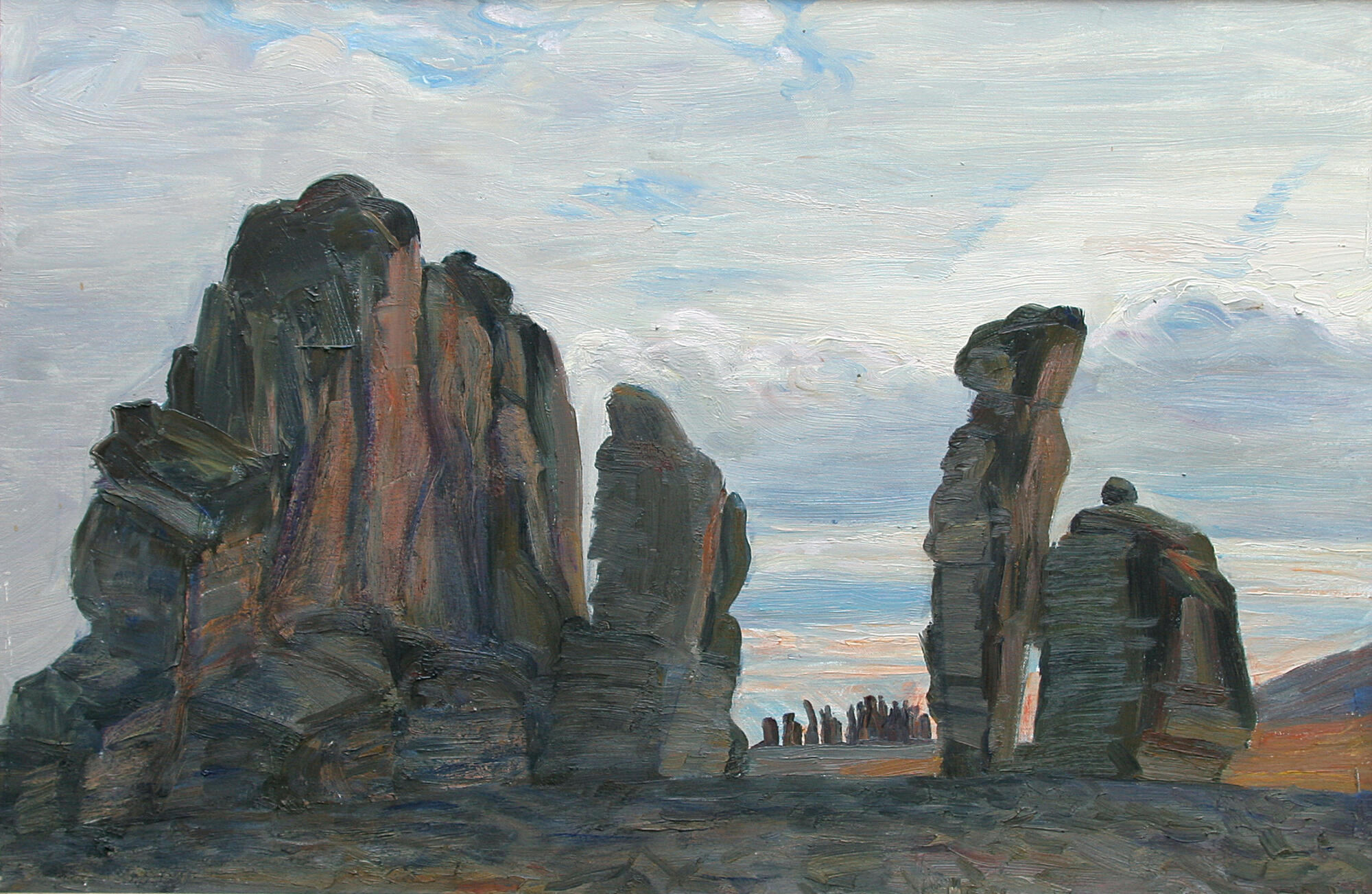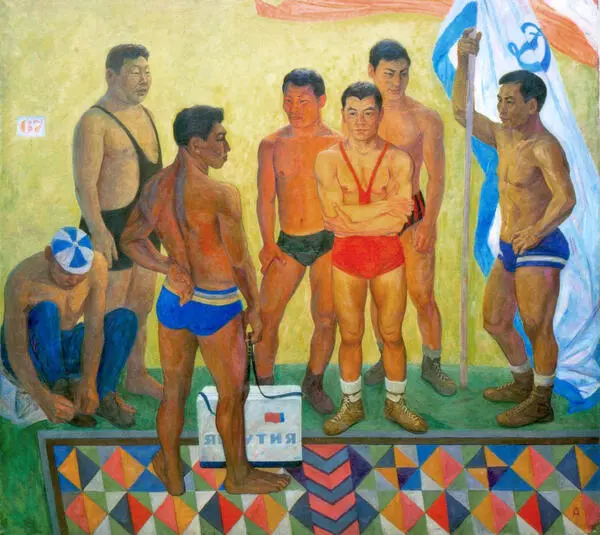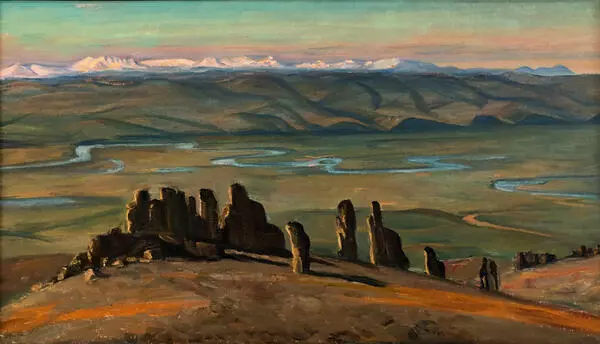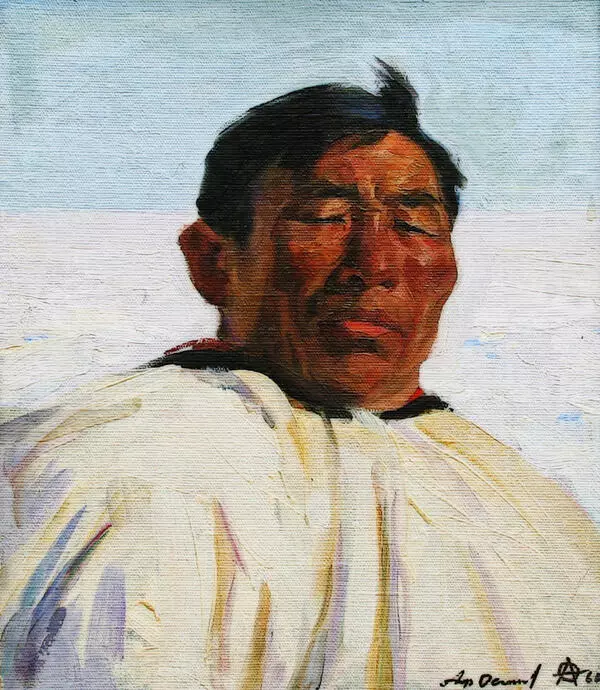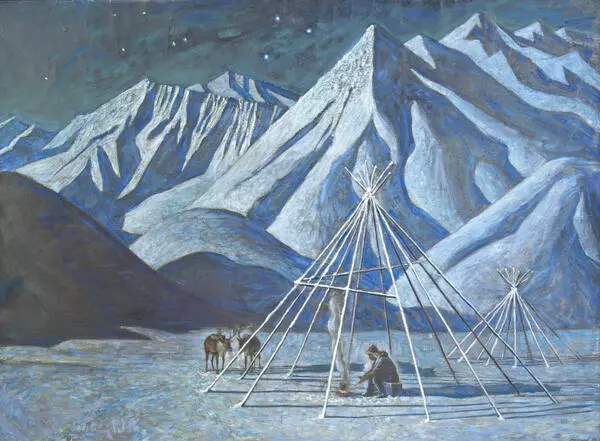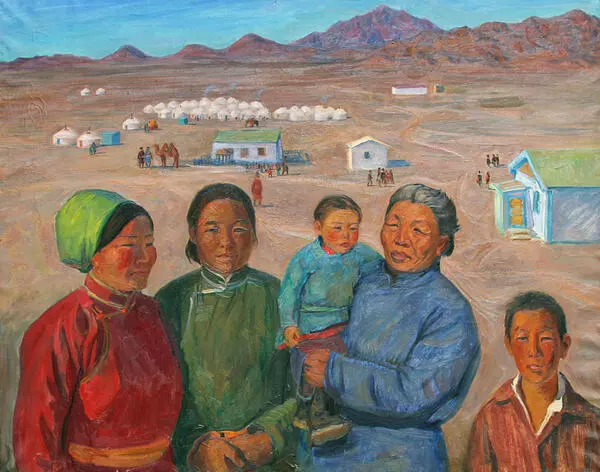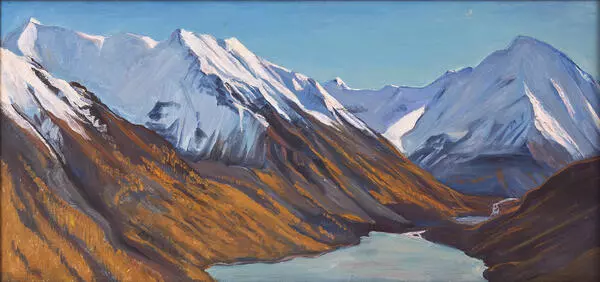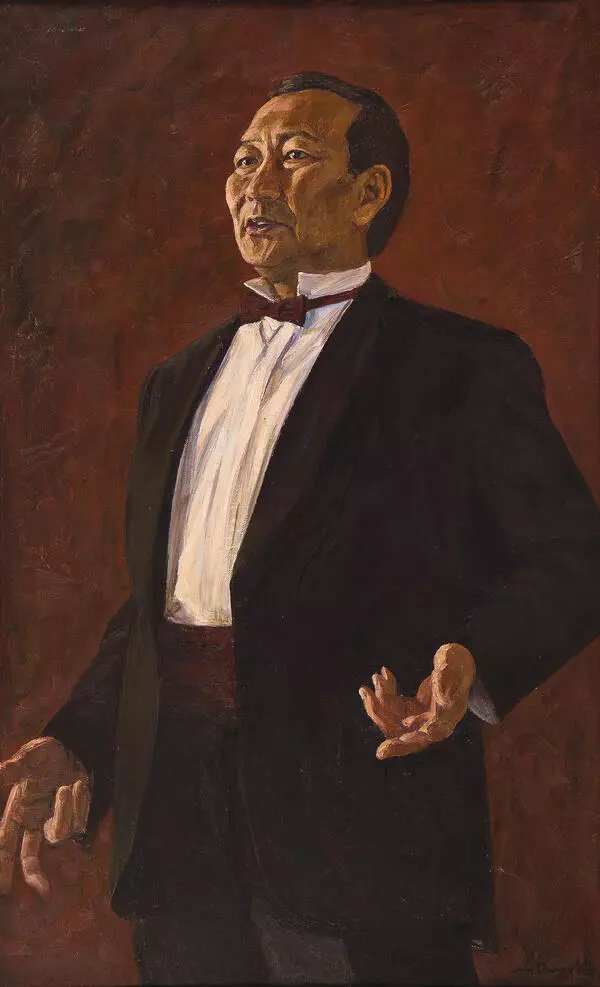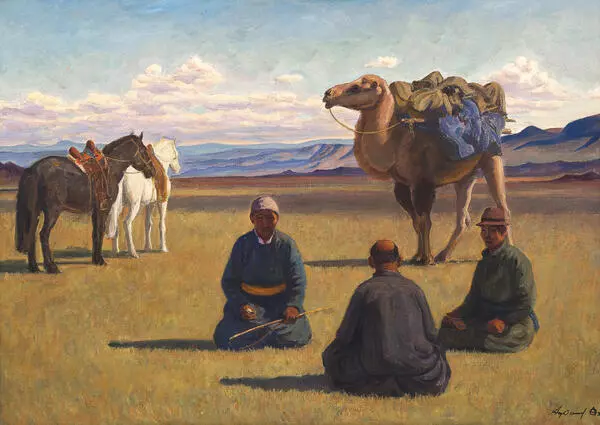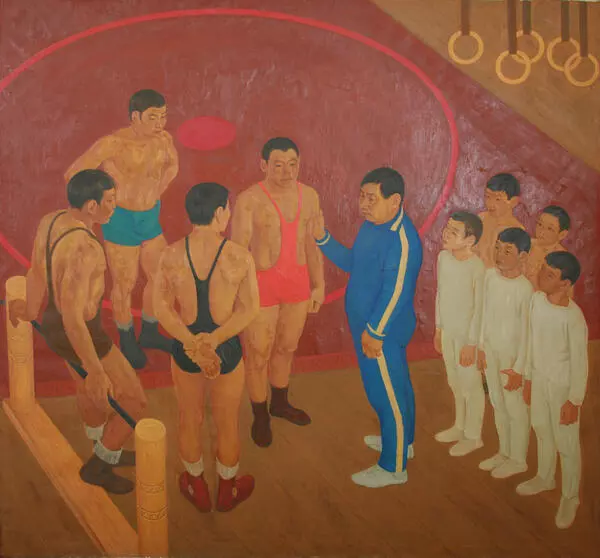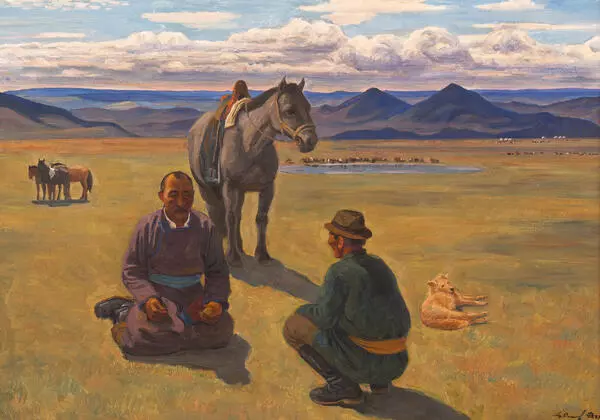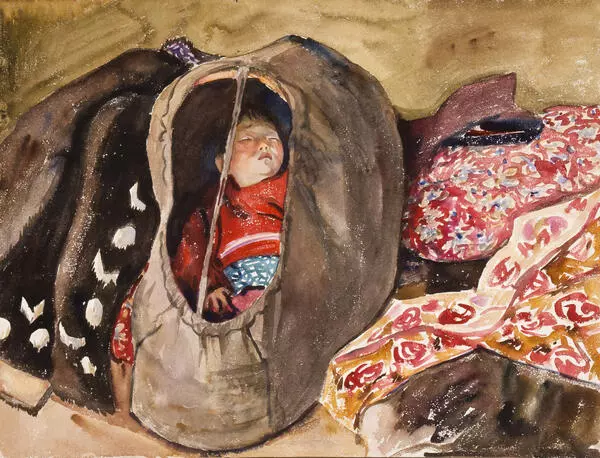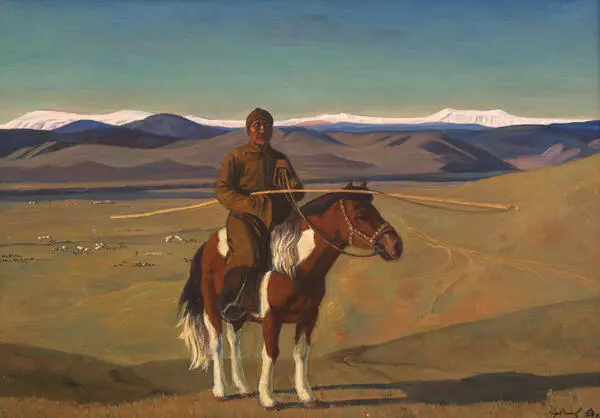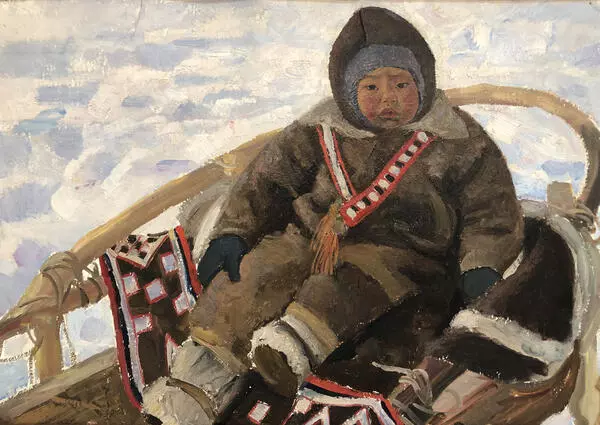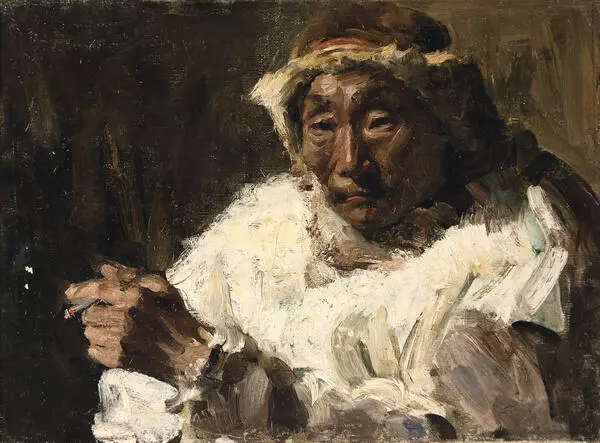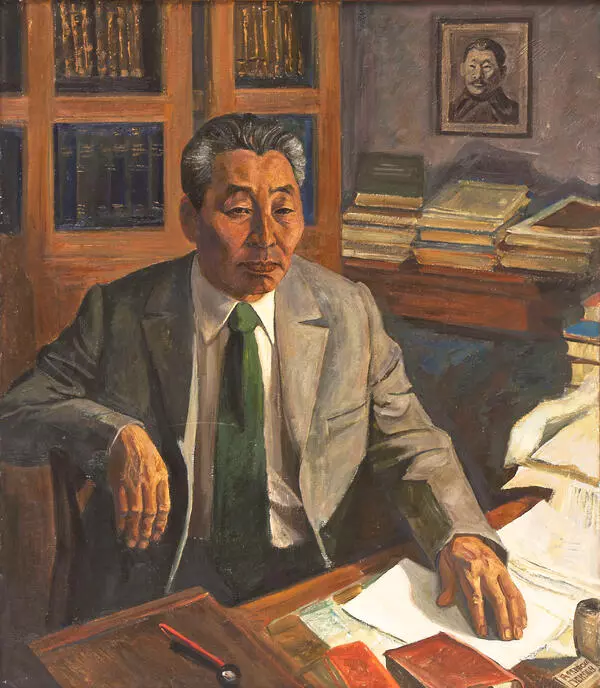Afanasy Osipov is a Yakut painter, People’s Artist of the USSR, academician of the Russian Academy of Arts, winner of the Ilya Repin State Prize of the Russian Federation. Osipov’s works were exhibited at the all-union and international exhibitions.
Afanasy Osipov’s painting is closely connected with the traditions of Russian realism and the Soviet school. The artist had great respect for classical art, but his connection with his homeland Yakutia, as well as its history, life and, nature is just as significant for understanding Osipov’s work. Afanasy Osipov’s pictorial composition “Walking Rocks” painted in 2004 is dedicated to the natural masterpiece of mountain Yakutia, i.e. Mount Kisilyakh, which inspired the artist. According to an ancient legend, when the land of modern Verkhoyansk was not yet covered with snow horizons and unbroken ice, people lived in the mountains. Climate change brought more and more cold every year, and when it seemed impossible to live among the frosty breath of nature, the people of the mountains decided to move to the South. On the road they got into trouble. While turning the Kisilyakh Ridge, many of them froze and turned into stone statues. According to a legend, since then, sacred “kisilyakhs” are the places of power. A positive life energy emanates from them.
In the landscape “Walking Rocks”, the artist emphasizes the intense color of “kisilyakhs” by using color accents of dark gray, earthy, and copper shades. The sharpened eyes of the author managed to capture the mood of nature and convey the monumental grandeur of the rocks, each of which is unique in shape.
In the second half of the 19th century, explorer of Siberia Gerhard Maydell described geological phenomenon of the Kisilyakh Rocks in his records: “The lower part of these strange formations up to a height of one fathom was mostly thinner than the upper part. There were even those that, when passing them on horseback, you could not help asking yourself whether it was better to go around, because the columns stood on such a thin leg that it seemed they could collapse every minute.” In the landscape, the author complicates the compositional structure, thus opening and contrasting the foreground and background views.
Afanasy Osipov’s painting is closely connected with the traditions of Russian realism and the Soviet school. The artist had great respect for classical art, but his connection with his homeland Yakutia, as well as its history, life and, nature is just as significant for understanding Osipov’s work. Afanasy Osipov’s pictorial composition “Walking Rocks” painted in 2004 is dedicated to the natural masterpiece of mountain Yakutia, i.e. Mount Kisilyakh, which inspired the artist. According to an ancient legend, when the land of modern Verkhoyansk was not yet covered with snow horizons and unbroken ice, people lived in the mountains. Climate change brought more and more cold every year, and when it seemed impossible to live among the frosty breath of nature, the people of the mountains decided to move to the South. On the road they got into trouble. While turning the Kisilyakh Ridge, many of them froze and turned into stone statues. According to a legend, since then, sacred “kisilyakhs” are the places of power. A positive life energy emanates from them.
In the landscape “Walking Rocks”, the artist emphasizes the intense color of “kisilyakhs” by using color accents of dark gray, earthy, and copper shades. The sharpened eyes of the author managed to capture the mood of nature and convey the monumental grandeur of the rocks, each of which is unique in shape.
In the second half of the 19th century, explorer of Siberia Gerhard Maydell described geological phenomenon of the Kisilyakh Rocks in his records: “The lower part of these strange formations up to a height of one fathom was mostly thinner than the upper part. There were even those that, when passing them on horseback, you could not help asking yourself whether it was better to go around, because the columns stood on such a thin leg that it seemed they could collapse every minute.” In the landscape, the author complicates the compositional structure, thus opening and contrasting the foreground and background views.
